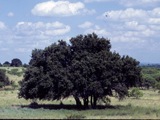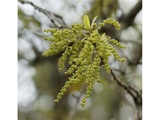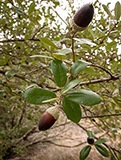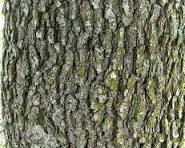
by CMG Betty J
Beloved by Texans for its stately appearance, the Texas Live Oak, Quercus fusiformis, is native from southern Oklahoma through central Texas and south to northern Mexico. Also known as Escarpment Live Oak, Plateau Live Oak, Hill Country Live Oak, Scrub Live Oak, Plateau Oak, Encino Molino and Tesmoli, they may present themselves as a large, bushy thicket or a large, spreading tree. They are considered a variation of and much more hardy and drought tolerant than Q. virginiana (Southern Live Oak) which also grows in the Hill Country. Texas Live Oaks commonly grow to 50’ tall with a spread of up to 100’. Their large, twisting limbs form a dense crown and the limbs often touch the ground in an obstructed setting. Live Oaks can live for 250 years or more. 

Escarpment Live Oak, Quercus fusiformis QUFU
The semi-evergreen, ovate leaves are one to three inches long and unlobed except on young plants where there is a pointed lobe. Appearing to be evergreen, this species is actually tardily deciduous, shedding its leaves in late February and March as the new leaves emerge. The leaves of the Q. fusiformis are smaller than those of Q. virginiana. Yellow catkins appear in March, April and May. The elongated acorns are ¾” to one inch long with a scaly brown cup. The bark is dark to reddish brown with thick, shallow furrows.
 An attractive shade tree for use in the residential landscape Live Oak trees grow well in many types of soil including sandy, clay, loam, caliche and slightly acidic sands. They support a wide variety of wildlife, providing cover and nesting sites for many birds and acorns for food for deer and other animals; they are the larval host for Hairstreak and Horace’s Duskywing butterflies.
An attractive shade tree for use in the residential landscape Live Oak trees grow well in many types of soil including sandy, clay, loam, caliche and slightly acidic sands. They support a wide variety of wildlife, providing cover and nesting sites for many birds and acorns for food for deer and other animals; they are the larval host for Hairstreak and Horace’s Duskywing butterflies.

Both Q. virginiana and Q. virginiana var. Q, fusiformis are susceptible to oak wilt and live oak decline when subjected to extended drought or long periods of extreme cold. If you suspect trees are infected with oak wilt, contact an arborist as soon as possible.